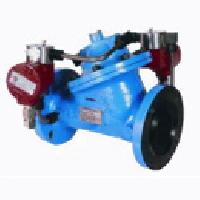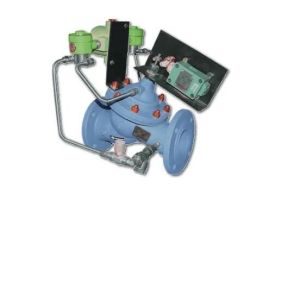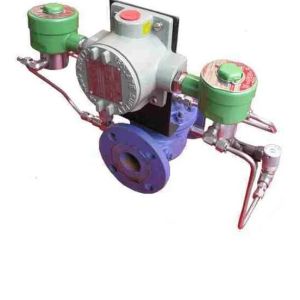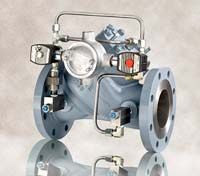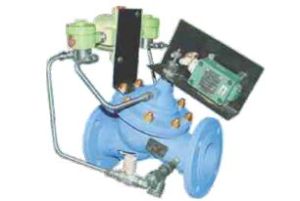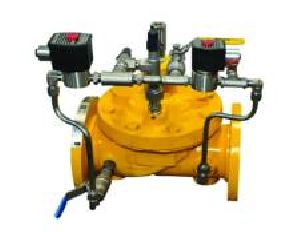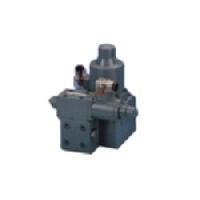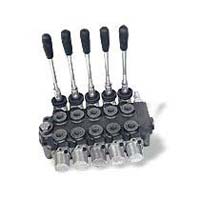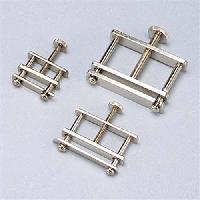Listing ID #781317
Company Information
Ask for more detail from the seller
Contact SupplierIn the world of industrial process control, digital control valves offer a modern and precise approach to regulating fluid flow. They combine the traditional functionality of a control valve with the advantages of digital technology. Here's a comprehensive breakdown of digital control valves and how they work:
Function:
· A digital control valve regulates fluid flow within a system by adjusting the position of a valve seat or opening.
· Unlike traditional pneumatic control valves that rely on compressed air for actuation, digital control valves use an electric motor or solenoid to move the valve stem.
· This movement is controlled by a digital signal, typically received from a control system or process controller.
· The digital signal instructs the valve to open, close, or adjust its position to achieve the desired flow rate within the system.
Components:
· Electric Actuator: Replaces the pneumatic actuator of traditional valves. It converts the digital signal into precise motor movement, controlling the valve stem position.
· Solenoid Valves (Optional): In some designs, solenoid valves might be used for pilot operation or fast opening/closing functions.
· Position Sensor: Provides feedback on the actual valve stem position, ensuring the valve movement aligns with the digital control signal.
· Control Electronics: The "brains" of the valve, responsible for interpreting the digital signal, controlling the motor or solenoid operation, and processing feedback from the position sensor.
Benefits of Digital Control Valves:
· High Accuracy and Precision: Digital control offers finer control over valve position compared to pneumatic systems, leading to more precise flow rate regulation.
· Improved Response Time: Digital signals travel faster than compressed air, resulting in quicker valve response to changes in flow requirements.
· Remote Monitoring and Control: Digital control valves can be easily integrated with control systems for remote monitoring, data logging, and configuration adjustments.
· Reduced Maintenance: Digital valves eliminate the need for compressed air systems and associated maintenance requirements.
· Enhanced Diagnostics: Digital control systems can provide diagnostic information on valve performance, aiding in proactive maintenance and troubleshooting.
Applications of Digital Control Valves:
Digital control valves find application in various industries due to their precise control and communication capabilities:
· Chemical Processing Plants: Precisely controlling the flow of various chemicals within complex reaction and separation processes.
· Oil and Gas Production: Regulating flow rates of crude oil, refined products, and natural gas during production, transportation, and refining.
· Power Generation: Controlling fuel gas, cooling water, and other fluid flows within power plants for efficient energy generation.
· Water and Wastewater Treatment: Accurately regulating water flow rates at various stages of treatment plants for optimal performance.
· HVAC Systems: Precisely controlling hot and cold water flow rates within heating, ventilation, and air conditioning systems for efficient climate control.
· Pharmaceutical Manufacturing: Maintaining strict flow control for sensitive materials within pharmaceutical production processes.
Selection Considerations:
Choosing the right digital control valve requires considering several factors:
· Fluid Type: The valve material and design should be compatible with the fluid being handled.
· Flow Rate Range: The valve needs to handle the expected minimum and maximum flow rates within the system.
· Pressure Rating: The valve's pressure rating should exceed the system's maximum operating pressure.
· Accuracy Requirements: Select a valve with an accuracy level that meets your specific flow control needs.
· Communication Protocol: Ensure the valve's communication protocol (e.g., Modbus, HART) is compatible with your control system.
· Safety Features: Consider fail-safe mechanisms and other safety features depending on the application's criticality.
By understanding the workings, benefits, and selection considerations for digital control valves, you can leverage their precise control and digital communication capabilities to optimize flow regulation within your industrial processes.


